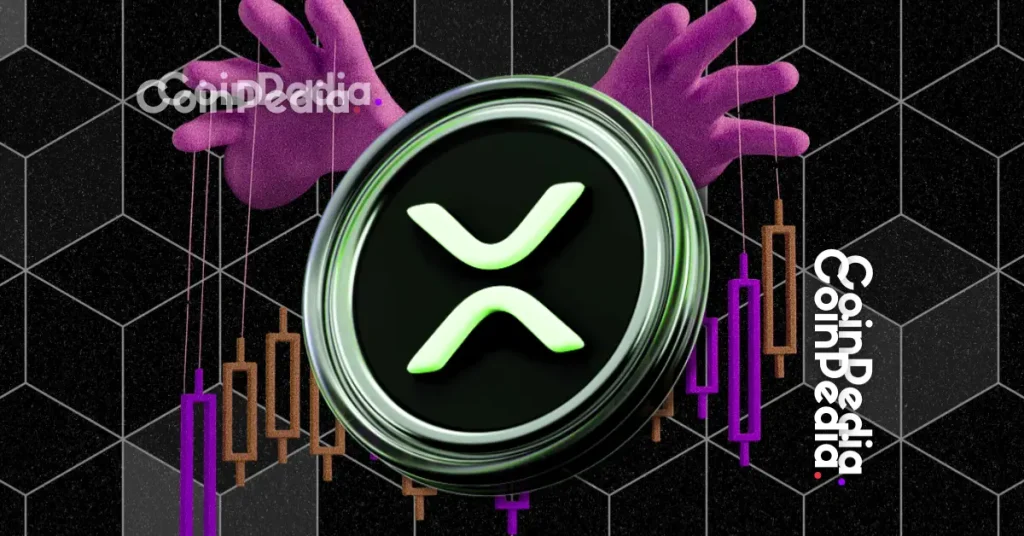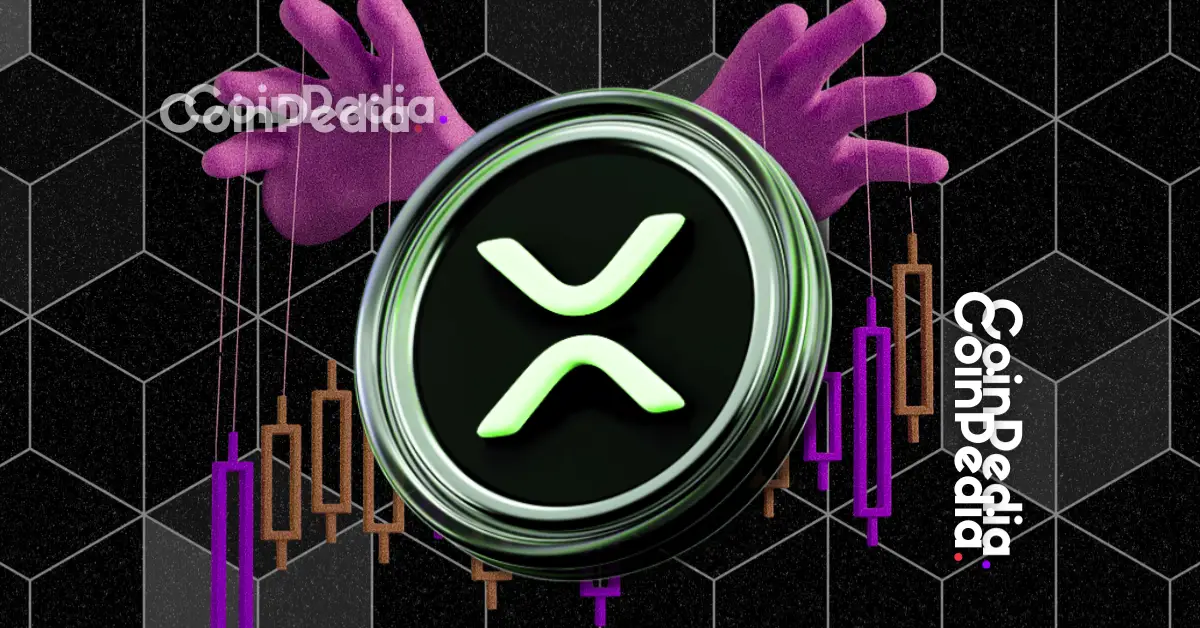
The Ripple Effect: Analyzing XRP’s Recent Surge and Ripple’s Strategic Moves
Introduction
The cryptocurrency market is a dynamic and unpredictable landscape, often characterized by sudden surges and dramatic shifts. Recently, XRP, the native cryptocurrency of the Ripple network, has captured significant attention with its impressive price performance. This surge is not merely a fleeting market anomaly but a reflection of Ripple’s strategic initiatives and broader industry trends. Understanding the factors driving XRP’s recent rally requires a deep dive into Ripple’s recent developments, including the launch of its stablecoin, RLUSD, and its pursuit of a national banking license. These moves are not only reshaping Ripple’s trajectory but also influencing the broader cryptocurrency ecosystem.
RLUSD: Ripple’s Strategic Foray into Stablecoins
The Launch of RLUSD
One of the most pivotal developments in Ripple’s recent strategy is the introduction of RLUSD, a stablecoin pegged 1:1 to the U.S. dollar. Stablecoins have become a cornerstone of the cryptocurrency market, offering a stable medium of exchange that mitigates the volatility inherent in many cryptocurrencies. RLUSD is designed to provide a reliable and compliant alternative for transactions, particularly in cross-border payments, an area where Ripple has already established a strong foothold.
Addressing Volatility Concerns
XRP has often been criticized for its volatility, which can deter institutional investors and businesses seeking stability in their financial operations. By launching RLUSD, Ripple aims to address this concern directly. The stablecoin provides a stable counterpart to XRP, allowing users to benefit from the speed and efficiency of the Ripple network without the associated price fluctuations. This dual approach—offering both a volatile asset (XRP) and a stable asset (RLUSD)—positions Ripple to cater to a broader range of market participants.
Competing with USDC
The introduction of RLUSD has sparked comparisons with USDC, one of the most widely used stablecoins in the cryptocurrency market. Industry experts have noted that RLUSD is positioned to compete directly with USDC, while XRP serves a distinct purpose within the Ripple ecosystem. This competitive positioning is crucial, as the stablecoin market is highly competitive, with several players vying for market share. Ripple’s focus on compliance and transparency could give RLUSD a competitive edge, particularly as regulatory scrutiny of stablecoins intensifies.
BNY Mellon’s Role as Custodian
Ripple’s partnership with BNY Mellon, one of the world’s largest custodian banks, is a significant validation of its stablecoin strategy. BNY Mellon’s involvement provides assurance to potential users of RLUSD, particularly institutional investors, regarding the security and reliability of the stablecoin. This collaboration underscores Ripple’s commitment to regulatory compliance and institutional adoption, further strengthening RLUSD’s position in the market.
Ripple’s Pursuit of a National Banking License
Strategic Ambitions
Ripple’s application for a national banking license from the Office of the Comptroller of the Currency (OCC) is a bold move that signals the company’s ambition to become a major player in the traditional financial system. Obtaining a national banking license would allow Ripple to offer a broader range of financial services, including custody, payment processing, and lending, all under federal regulation. This move is a strategic pivot that could significantly enhance Ripple’s credibility and market position.
Regulatory Clarity and Adoption
One of the primary benefits of obtaining a national banking license is the regulatory clarity it provides. Ripple has faced significant regulatory challenges, particularly due to its ongoing legal battle with the SEC. A banking license would provide Ripple with greater regulatory certainty, which could pave the way for increased adoption of XRP and RLUSD. Institutional investors and financial institutions are more likely to engage with Ripple’s products and services if they are backed by federal regulation.
Potential Challenges
However, Ripple’s pursuit of a banking license is not without its challenges. One significant hurdle is the large amount of XRP that Ripple holds on its balance sheet. Regulators may be concerned about the potential risks associated with holding a substantial amount of a volatile cryptocurrency. How Ripple addresses these concerns will be crucial to the success of its banking license application. Additionally, the regulatory landscape for cryptocurrencies is still evolving, and Ripple must navigate this complex environment carefully.
XRP’s Price Surge: Market Sentiment and Predictions
Factors Driving the Rally
XRP’s recent price surge is a multifaceted phenomenon driven by several key factors. The launch of RLUSD has generated excitement and optimism among investors, as it addresses long-standing concerns about volatility and provides a stable counterpart to XRP. Ripple’s pursuit of a national banking license has further bolstered market sentiment, signaling the company’s commitment to regulatory compliance and long-term growth.
Whale accumulation, or the buying activity of large XRP holders, has also contributed to the price surge. Whales often indicate confidence in an asset’s future prospects, and their accumulation of XRP suggests a bullish outlook. Additionally, the broader cryptocurrency market rally has provided a favorable backdrop for XRP’s gains, as positive sentiment in the market tends to lift all assets.
Price Predictions and Technical Analysis
Analysts have offered various price predictions for XRP, with some suggesting that it could reach new all-time highs in the coming months. Technical analysis indicates that XRP’s dominance chart has broken out of a bullish pennant, a pattern that often precedes significant upward moves. Some analysts predict gains ranging from 21% to 275%, which would be one of the most substantial rallies XRP has ever experienced.
However, it is essential to approach these predictions with caution. Cryptocurrency markets are highly volatile, and price predictions are not guarantees. Investors should conduct thorough research and consider their risk tolerance before making any investment decisions. The cryptocurrency market is influenced by a multitude of factors, including regulatory developments, technological advancements, and macroeconomic trends, all of which can impact price movements.
Ripple’s Legal Battle with the SEC
The Ongoing Lawsuit
Ripple’s legal battle with the SEC has been a significant factor influencing XRP’s price and overall sentiment. The SEC’s lawsuit, which alleges that Ripple sold XRP as an unregistered security, has cast a shadow over the company for years. The outcome of this lawsuit will have far-reaching implications for Ripple and the broader cryptocurrency industry.
Potential Outcomes and Impact
A favorable ruling for Ripple could lead to increased adoption of XRP and further validation of its business model. It would also set a precedent for other cryptocurrency projects, providing clarity on the regulatory treatment of digital assets. Conversely, an unfavorable ruling could have negative consequences for XRP, potentially leading to decreased market confidence and regulatory uncertainty.
Delays and Uncertainty
The legal proceedings have been subject to numerous delays and procedural complexities, contributing to volatility in XRP’s price. This uncertainty has made it difficult for investors to assess XRP’s long-term prospects. However, Ripple’s recent strategic moves, such as the launch of RLUSD and the pursuit of a national banking license, suggest that the company is focused on navigating these challenges and positioning itself for long-term success.
XRP’s Utility and Ecosystem Growth
Cross-Border Payments
XRP is designed to facilitate fast and low-cost cross-border payments, making it an attractive option for businesses and individuals who need to send money internationally. Ripple’s payment network, RippleNet, leverages XRP to enable real-time settlement of transactions, reducing costs and increasing efficiency. This utility is a key differentiator for XRP, as it addresses a real-world need in the global financial system.
Institutional Interest
Ripple has been successful in attracting institutional interest in its technology. Several financial institutions have partnered with Ripple to use its solutions for cross-border payments. This adoption by established players in the financial industry is a positive sign for the long-term viability of XRP. Institutional adoption not only provides validation for Ripple’s technology but also contributes to the overall growth and stability of the XRP ecosystem.
The Future of XRP and Ripple
Key Factors Influencing the Future
Looking ahead, the future of XRP and Ripple depends on several key factors. The outcome of the SEC lawsuit will be a critical determinant, as it will shape the regulatory landscape for Ripple and the broader cryptocurrency industry. The adoption of RLUSD and the success of Ripple’s banking license application will also play significant roles in determining Ripple’s trajectory.
Strategic Positioning
Ripple’s strategic positioning is a testament to its commitment to innovation and compliance. By launching RLUSD, pursuing a national banking license, and expanding its utility in cross-border payments, Ripple is positioning itself as a bridge between the traditional financial world and the burgeoning crypto landscape. This dual approach allows Ripple to cater to both institutional and retail investors, providing a comprehensive suite of financial solutions.
Potential Challenges and Opportunities
While Ripple faces several challenges, including regulatory uncertainty and market volatility, it also has significant opportunities for growth. The increasing demand for stablecoins and the growing interest in cross-border payment solutions present ripe opportunities for Ripple to expand its market share. Additionally, Ripple’s focus on compliance and institutional adoption positions it well to navigate the evolving regulatory landscape.
A Tipping Point?
Ripple’s recent moves suggest a company at a critical juncture, strategically positioning itself to bridge the gap between the traditional financial world and the burgeoning crypto landscape. The launch of RLUSD addresses the volatility concerns surrounding XRP, while the pursuit of a national banking license underscores Ripple’s commitment to regulatory compliance and integration into the established financial system. While challenges remain, particularly the ongoing legal battle with the SEC, the current momentum suggests that Ripple is on a path toward solidifying its position as a key innovator in the future of finance. Whether this momentum translates into sustained success remains to be seen, but the signs are undeniably encouraging. Ripple’s strategic initiatives and the broader industry trends point to a future where digital assets and traditional finance converge, and Ripple is poised to play a pivotal role in this transformation.





